Search the Community
Showing results for 'bliss'.
Found 6,728 results
-
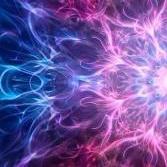
Da77en replied to Da77en's topic in Spirituality, Consciousness, Awakening, Mysticism, Meditation, God
I understand there is this idea that fear is just a natural thing that shouldn't necessary be completely let go of, however, if you want to reach higher and higher levels of expansion of consciousness the fear is very important to fully let go of. If someone still has fear it is because their state of consciousness hasn't yet expanded to the point where they know the fear based ideas they are buying into aren't actually true. When it comes to referencing Bashar I feel it is important to acknowledge that people have known many of these things for thousands of years and Bashar is just one person who has been serving to illuminate people on these things. I'm not actually taking this idea from Bashar, the process I listed is more in depth and direct then what Bashar talks about. One thing that people often do when investigating negative beliefs is making it too much of an intellectual activity as opposed to using it specifically in a way that works directly on your consciousness. I suggest doing both but the most important thing is doing it so that it works on your consciousness directly and the method I listed is doing it in a way where the intellect isn't actually required at all in order to let go of all of your fear. I have reached states of expansiveness so profound that wouldn't have been able to have be achieved without letting go of the fear completely because the fear holds you down and constricts you. If the fear of each individual is sufficiently addressed and let go of, the world will progress to profound levels of development, which would not be able to occur otherwise. From my perspective, any kind of negativity is stemming from fear. When I talk about judgement, I'm talking about buying into negative beliefs about someone or something. Judgement in this sense is projecting negativity/fear onto whatever you are judging as opposed to just seeing it the way it is. The comparison I'm talking about is similar to the judgement in the sense of believing/defining that something is less than/greater than something else. Seeing someone as more/less worthy, more/less intelligent, more/less deserving, etc. You can compare in an objective way but when you start comparing in a way that is putting someone/something above or below something else it becomes fear based as opposed to objective. Any kind of negative belief/definition you give to someone as a comparison is a projection of your own fear. Insecurity is fear based because it represents the ideas of being unworthy, undeserving, incompetent, unintelligent, etc. which are all fear based beliefs. Overcomplication is an expression of fear because you are insisting that things need to be complicated, as opposed to understanding that things are fundamentally very simple. Perfectionism is an expression of fear because it means you are resisting the perfection that is already built into your consciousness, you are already a perfect expression of whatever state of being/self you are being in any given moment. Consciousness is already perfectly designed and thus perfectionism comes from a fear based perspective of life. The expressions of fear I listed are some of the fears that are most common in peoples daily lives and would be very high yield if we as a society could let them go. There are "deeper" fears that most people aren't yet aware of and it's important to gain experience when it comes to letting go of fear so that you can eventually progress and face the deeper fears. If you aren't confident in your ability to let go of fear you wont take full action when it comes to expanding your consciousness because fear is a very natural thing that comes up when doing so. It's important for everyone in this society to eventually become a master of fear. When it comes to the idea of seeing things in the most conducive way for survival the optimal way of doing that from my perspective is seeing things the way they actually are as opposed to projecting your own fear onto it. You may survive more safely by being fear based but living in fear doesn't allow for the kind of expansion that we need in order to live a life of ecstasy and enlightenment. When it comes to bringing yourself into profound states of joy, love, bliss, passion, excitement, ecstasy, enlightenment, etc. l can't think of anything more important than letting go of fear because the fear prevents the sufficient expansion of your consciousness that is necessary in order to go into such states. Lastly, there is this relatively common belief that if something is simple it's not worth doing or it's probably too good to be true. Letting go of fear is extremely simple but doing this one thing can single handedly resolve the suffering of humanity because suffering is caused by fear. If you let go of all of your fear then you are at least peaceful no matter what, if not blissful and ecstatic. People are subconsciously/unconsciously attached to their fear which is one reason people rarely talk about actually letting it go completely. -
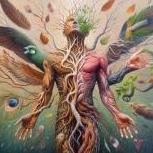
An young being replied to Sugarcoat's topic in Spirituality, Consciousness, Awakening, Mysticism, Meditation, God
Enlightenment in my opinion is all about being contended and being in a state free of attachment. It's about being in acceptance with what you are and experiencing life without being enslaved to the selfish tendencies of the ego and resistance to life. But generally enlightened people are blissful because they prefer the blissful nature of the union and egolessness over pleasures, simply because they know pleasures are costly and pushes us deep into the illusion, not because they hate them. The neutrality you are describing is a state of light bliss for a prolonged time period.When you are being neutral without being in a state of bliss, the feeling of peace will be overwhelmed by feeling of boredom and longing after desires, that could happen if you are inactive and egoistic at the same time. Do you want low levels of bliss for a prolonged time or intense bliss for a short period of time? You can choose to be highly blissful all the time, but that's rare and means you have to put more effort in the form of intense meditation, devotion or selfless activities. To live life peacefully, you don't need to do that. -

Yimpa replied to Sugarcoat's topic in Spirituality, Consciousness, Awakening, Mysticism, Meditation, God
I don’t care about bliss either. I care about understanding Truth. That requires radical honesty with yourself. Such as experiencing the Devil as Love. -

Javfly33 replied to Sugarcoat's topic in Spirituality, Consciousness, Awakening, Mysticism, Meditation, God
@Sugarcoat What you care does not Matter to how Reality is constructed. Just Google the 5 bodies in Yoga and wonder why the 5th and last body is called "Bliss Body". -
1. We who are aware of this world are the only ego All questions can ultimately be resolved only in silence, but to enable us to experience the silence that we actually are, Bhagavan gave us teachings in words, so until we lose ourself in absolute silence, his words are our guide. He taught us that everything that we experience other than ourself is just a dream, and that just as in dream there is only one ego who projects and perceives the dream world and all the people in it, in this dream that we now mistake to be waking we are the only ego who has projected this world and is perceiving it. This teaching is called ēka-jīva-vāda (the contention that there is only one jīva or ego), and once when Bhagavan was explaining it, one of the devotees who was present there asked him, ‘Which one of us here is the one jīva?’, to which he replied, ‘You are that’. Then another devotee asked, ‘What about me?’, and to him also Bhagavan said, ‘You are that’. What should we understand from this? When we are dreaming we seem to be just one among many people in the dream world, and we assume that each other person is a jīva or ego just like us and that each of them is therefore perceiving the world just as we are. However, as soon as we wake up, we understand that all those other people we saw in our dream were just our own mental projections and that none of them were actually perceiving or aware of anything. Likewise in our present state all the other people we see are just our own mental projections, so it is only in our view that they seem to be perceiving the world just as we are. This is why if we ask Bhagavan who is the one jīva, he will always say ‘You are that’, because though we cannot know whether anyone else is actually aware of anything, we know that we are aware of this world, so we must be the one jīva or ego that he was talking about. 2. Uḷḷadu Nāṟpadu verse 26: investigating what this ego is is giving up everything This ēka-jīva-vāda is clearly implied in so many of his teachings. For example, in verse 26 of Uḷḷadu Nāṟpadu he says: அகந்தையுண் டாயி னனைத்துமுண் டாகு மகந்தையின் றேலின் றனைத்து — மகந்தையே யாவுமா மாதலால் யாதிதென்று நாடலே யோவுதல் யாவுமென வோர். ahandaiyuṇ ḍāyi ṉaṉaittumuṇ ḍāhu mahandaiyiṉ ḏṟēliṉ ḏṟaṉaittu — mahandaiyē yāvumā mādalāl yādideṉḏṟu nādalē yōvudal yāvumeṉa vōr. பதச்சேதம்: அகந்தை உண்டாயின், அனைத்தும் உண்டாகும்; அகந்தை இன்றேல், இன்று அனைத்தும். அகந்தையே யாவும் ஆம். ஆதலால், யாது இது என்று நாடலே ஓவுதல் யாவும் என ஓர். Padacchēdam (word-separation): ahandai uṇḍāyiṉ, aṉaittum uṇḍāhum; ahandai iṉḏṟēl, iṉḏṟu aṉaittum. ahandai-y-ē yāvum ām. ādalāl, yādu idu eṉḏṟu nādal-ē ōvudal yāvum eṉa ōr. அன்வயம்: அகந்தை உண்டாயின், அனைத்தும் உண்டாகும்; அகந்தை இன்றேல், அனைத்தும் இன்று. யாவும் அகந்தையே ஆம். ஆதலால், யாது இது என்று நாடலே யாவும் ஓவுதல் என ஓர். Anvayam (words rearranged in natural prose order): ahandai uṇḍāyiṉ, aṉaittum uṇḍāhum; ahandai iṉḏṟēl, aṉaittum iṉḏṟu. yāvum ahandai-y-ē ām. ādalāl, yādu idu eṉḏṟu nādal-ē yāvum ōvudal eṉa ōr. English translation: If the ego comes into existence, everything comes into existence; if the ego does not exist, everything does not exist. [Hence] the ego itself is everything. Therefore, know that investigating what this [ego] is alone is giving up everything. Which ego is he referring to here? The one and only ego there is, namely ourself, so we are that. However this one ego is not what we actually are, but only what we seem to be, so if we investigate ourself keenly enough, we will see what we actually are and hence this one ego will vanish forever, since it does not actually exist, just as an illusory snake would vanish if we were to look at it carefully enough to see that it is actually just a rope. Therefore, since the seeming existence of everything else depends upon the seeming existence of ourself as this ego, and since this ego will cease to exist if we investigate it keenly enough, Bhagavan says, ‘ஆதலால், யாது இது என்று நாடலே ஓவுதல் யாவும்’ (ādalāl, yādu idu eṉḏṟu nādalē yāvum ōvudal), which means, ‘Therefore, investigating what this [ego] is alone is giving up everything’. 3. Upadēśa Undiyār verse 28: when everything else ceases to exist, what remains is only beginningless, infinite and undivided sat-cit-ānanda However, what he means by ‘everything’ in this context is all phenomena, and when the ego and all phenomena cease to exist what remains is only ourself as we actually are, which is anādi (beginningless), ananta (endless, limitless or infinite), akhaṇḍa (unbroken or undivided) sat-cit-ānanda (being-awareness-bliss), as he says in verse 28 of Upadēśa Undiyār: தனாதியல் யாதெனத் தான்றெரி கிற்பின் னனாதி யனந்தசத் துந்தீபற வகண்ட சிதானந்த முந்தீபற. taṉādiyal yādeṉat tāṉḏṟeri hiṯpiṉ ṉaṉādi yaṉantasat tundīpaṟa vakhaṇḍa cidāṉanda mundīpaṟa. பதச்சேதம்: தனாது இயல் யாது என தான் தெரிகில், பின் அனாதி அனந்த சத்து அகண்ட சித் ஆனந்தம். Padacchēdam (word-separation): taṉādu iyal yādu eṉa tāṉ terihil, piṉ aṉādi aṉanta sattu akhaṇḍa cit āṉandam. அன்வயம்: தான் தனாது இயல் யாது என தெரிகில், பின் அனாதி அனந்த அகண்ட சத்து சித் ஆனந்தம். Anvayam (words rearranged in natural prose order): tāṉ taṉādu iyal yādu eṉa terihil, piṉ aṉādi aṉanta akhaṇḍa sattu cit āṉandam. English translation: If one knows what the nature of oneself is, then [what will exist and shine is only] beginningless, endless [or infinite] and undivided sat-cit-ānanda [being-awareness-bliss]. Therefore what remains when everything ceases to exist is not nothingness but the infinite fullness of sat-cit-ānanda, which is what we actually are and what alone is real, even when other things seem to exist. 4. Uḷḷadu Nāṟpadu verse 12: we are not nothingness but pure awareness This is why Bhagavan says in verse 12 of Uḷḷadu Nāṟpadu: அறிவறி யாமையு மற்றதறி வாமே யறியும துண்மையறி வாகா — தறிதற் கறிவித்தற் கன்னியமின் றாயவிர்வ தாற்றா னறிவாகும் பாழன் றறி. aṟivaṟi yāmaiyu maṯṟadaṟi vāmē yaṟiyuma duṇmaiyaṟi vāhā — daṟitaṟ kaṟivittaṟ kaṉṉiyamiṉ ḏṟāyavirva dāṯṟā ṉaṟivāhum pāṙaṉ ṟaṟi. பதச்சேதம்: அறிவு அறியாமையும் அற்றது அறிவு ஆமே. அறியும் அது உண்மை அறிவு ஆகாது. அறிதற்கு அறிவித்தற்கு அன்னியம் இன்றாய் அவிர்வதால், தான் அறிவு ஆகும். பாழ் அன்று. அறி. Padacchēdam (word-separation): aṟivu aṟiyāmaiyum aṯṟadu aṟivu āmē. aṟiyum adu uṇmai aṟivu āhādu. aṟidaṟku aṟivittaṟku aṉṉiyam iṉḏṟāy avirvadāl, tāṉ aṟivu āhum. pāṙ aṉḏṟu. aṟi. English translation: What is devoid of knowledge and ignorance [about anything other than oneself] is actually knowledge [or awareness]. That which knows [anything other than oneself] is not real knowledge [or awareness]. Since it shines without another for knowing or for causing to know [or causing to be known], oneself is [real] knowledge [or awareness]. It is not a void [or nothingness]. Know [or be aware]. Therefore you need not have any fear about ‘total and complete nothingness’, because no such thing exists, and because when the ego ceases to exist there will be no one left to experience even a seeming nothingness, since what remains then is only what we actually are, which is pure and infinite self-awareness (awareness that is not aware of anything other than itself). (In this connection you may find it useful to read a more detailed article I wrote on this subject: Self-knowledge is not a void (śūnya).) 5. Uḷḷadu Nāṟpadu verse 31: the jñāni is aware of nothing other than itself, so our mind cannot grasp its perspective Regarding your question about my remark that in the view of the jñāni he alone exists, though we mistake the jñāni to be a person, it is not actually any such thing. As Bhagavan often used to say, jñāna alone is the jñāni, which means that pure self-awareness (ātma-jñāna) alone is what is aware of itself. Since nothing other than pure self-awareness exists in its view, our outward-facing mind is unable to comprehend it adequately, which is why Bhagavan says in verse 31 of Uḷḷadu Nāṟpadu: தன்னை யழித்தெழுந்த தன்மயா னந்தருக் கென்னை யுளதொன் றியற்றுதற்குத் — தன்னையலா தன்னிய மொன்று மறியா ரவர்நிலைமை யின்னதென் றுன்ன லெவன். taṉṉai yaṙitteṙunda taṉmayā ṉandaruk keṉṉai yuḷadoṉ ḏṟiyaṯṟudaṟkut — taṉṉaiyalā taṉṉiya moṉḏṟu maṟiyā ravarnilaimai yiṉṉadeṉ ḏṟuṉṉa levaṉ. பதச்சேதம்: தன்னை அழித்து எழுந்த தன்மயானந்தருக்கு என்னை உளது ஒன்று இயற்றுதற்கு? தன்னை அலாது அன்னியம் ஒன்றும் அறியார்; அவர் நிலைமை இன்னது என்று உன்னல் எவன்? Padacchēdam (word-separation): taṉṉai aṙittu eṙunda taṉmaya-āṉandarukku eṉṉai uḷadu oṉḏṟu iyaṯṟudaṟku? taṉṉai alādu aṉṉiyam oṉḏṟum aṟiyār; avar nilaimai iṉṉadu eṉḏṟu uṉṉal evaṉ? அன்வயம்: தன்னை அழித்து எழுந்த தன்மயானந்தருக்கு இயற்றுதற்கு என்னை ஒன்று உளது? தன்னை அலாது அன்னியம் ஒன்றும் அறியார்; அவர் நிலைமை இன்னது என்று உன்னல் எவன்? Anvayam (words rearranged in natural prose order): taṉṉai aṙittu eṙunda taṉmaya-āṉandarukku iyaṯṟudaṟku eṉṉai oṉḏṟu uḷadu? taṉṉai alādu aṉṉiyam oṉḏṟum aṟiyār; avar nilaimai iṉṉadu eṉḏṟu uṉṉal evaṉ? English translation: For those who are [blissfully immersed in and as] tanmayānanda [‘happiness composed of that’, namely our real self], which rose [as ‘I am I’] destroying themself [the ego], what one [action] exists for doing? They do not know [or experience] anything other than themself; [so] who can [or how to] conceive their state as ‘it is such’? As you rightly point out, there is no person remaining there to say what the perspective of the jñāni is, so if we want to know what its perspective actually is, we must turn within to see ourself and thereby to merge in and as the pure self-awareness (ātma-jñāna) that we actually are. 6. Uḷḷadu Nāṟpadu verse 33: the ‘I’ that rises to say ‘I have seen’ has seen nothing Regarding the people whom David Godman interviewed in some of his videos, who you say ‘were smiling and talking about their wonderful experiences as when their ego was destroyed’, there is a saying in Tamil, ‘கண்டவர் விண்டில்லை; விண்டவர் கண்டில்லை’ (kaṇḍavar viṇḍillai; viṇḍavar kaṇḍillai), which means ‘those who have seen do not say [or open their mouth]; those who say [or open their mouth] have not seen’. And as Bhagavan says in verse 33 of Uḷḷadu Nāṟpadu: என்னை யறியேனா னென்னை யறிந்தேனா னென்ன னகைப்புக் கிடனாகு — மென்னை தனைவிடய மாக்கவிரு தானுண்டோ வொன்றா யனைவரனு பூதியுண்மை யால். eṉṉai yaṟiyēṉā ṉeṉṉai yaṟindēṉā ṉeṉṉa ṉahaippuk kiḍaṉāhu — meṉṉai taṉaiviḍaya mākkaviru tāṉuṇḍō voṉḏṟā yaṉaivaraṉu bhūtiyuṇmai yāl. பதச்சேதம்: ‘என்னை அறியேன் நான்’, ‘என்னை அறிந்தேன் நான்’ என்னல் நகைப்புக்கு இடன் ஆகும். என்னை? தனை விடயம் ஆக்க இரு தான் உண்டோ? ஒன்று ஆய் அனைவர் அனுபூதி உண்மை ஆல். Padacchēdam (word-separation): ‘eṉṉai aṟiyēṉ nāṉ’, ‘eṉṉai aṟindēṉ nāṉ’ eṉṉal nahaippukku iḍaṉ āhum. eṉṉai? taṉai viḍayam ākka iru tāṉ uṇḍō? oṉḏṟu āy aṉaivar aṉubhūti uṇmai āl. அன்வயம்: ‘நான் என்னை அறியேன்’, ‘நான் என்னை அறிந்தேன்’ என்னல் நகைப்புக்கு இடன் ஆகும். என்னை? தனை விடயம் ஆக்க இரு தான் உண்டோ? அனைவர் அனுபூதி உண்மை ஒன்றாய்; ஆல். Anvayam (words rearranged in natural prose order): ‘nāṉ eṉṉai aṟiyēṉ’, ‘nāṉ eṉṉai aṟindēṉ’ eṉṉal nahaippukku iḍaṉ āhum. eṉṉai? taṉai viḍayam ākka iru tāṉ uṇḍō? aṉaivar aṉubhūti uṇmai oṉḏṟu āy; āl. English translation: Saying ‘I do not know myself’ [or] ‘I have known myself’ is ground for ridicule. Why? To make oneself an object known, are there two selves? Because being one is the truth of everyone’s experience. Therefore we should be very sceptical about anyone who claims ‘I have known myself’ or ‘I have experienced what remains after the ego is annihilated’. As you rightly point out, if the ego has been eradicated, who remains there to say ‘I’ have experienced anything? Whatever ‘I’ makes such claims can only be the ego, because what we actually are is infinite self-awareness, other than which nothing actually exists, so how could it make any such claims, and to whom could it make them? Therefore as Bhagavan says, all such claims are ‘ground for ridicule’. However, we need not concern ourself with the seeming self-ignorance or egotism of others, because those others seem to exist only in the outward-turned view of ourself as this ego, so all we need be concerned with is investigating ourself in order to find out what we ourself actually are and thereby free ourself from the clutches of this self-ignorant ego that we now seem to be.
-

Ajay0 replied to Sugarcoat's topic in Spirituality, Consciousness, Awakening, Mysticism, Meditation, God
Even Siddhartha took around six years to attain enlightenment or Buddhahood. He studied from the best teachers around, applied whatever he learnt passionately, endured privations which would weaken the resolve of lesser beings, and eventually reached enlightenment. There were many who died and still die trying to reach Mt.Everest, the highest peak in the world or Mt.K2,considered the most dangerous mountain in the world, but this does not meant that they were beyond human capabilities. Enlightenent is considered to be the greatest of human achievements due to the perpetual peace and bliss attained, compared to other achievements which will only result in temporary happiness and peace till the next desire arises. Nothing in life comes free and you have to pay the proper price for it in terms of study, effort and time. -

PurpleTree replied to Sugarcoat's topic in Spirituality, Consciousness, Awakening, Mysticism, Meditation, God
With the pear it was very cute yes. But these psychedelics like ayahuasca and shrooms are always rough for me. They taste horrible. And then it’s agony, horror, death, paranoia, bliss, this, that, feels like in being thrown into a washing machine. -
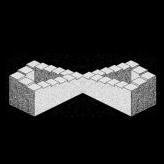
zurew replied to Vercingetorix's topic in Spirituality, Consciousness, Awakening, Mysticism, Meditation, God
Having both of these features at the same time seems to be a contradiction on its face (Impermanence, Shape-shifting). There might not be a contradiction entailed, but I need to know what you mean by impermanence first. I don't grant you that being in form necessarily presupposes being bounded by time and therefore necessarily being subject to change. There is no getting around this, you either need to bite the bullet that God could create something like heaven, where no one dies and can be in permanent bliss (unless you can show whats the contradiction entailed by the creation of Heaven or by something similar to heaven where death isn't logically necessary) or you can go with a set of metaphysical constraints that you put on God, but then the big bullet that you need to bite is that the existence of God (as you outined it) is not logically necessary ( which would mean that there are possible worlds that can exist - independent from the existence of God you are talking about ). What you guys always miss and this (includes Leo as well), is that as long as you don't demonstrate or establish why God is logically necessary, you can talk about metaphysics as much as you want, but you guys showing how 1 specific version of metaphysics can explain the world, from that doesn't follow that other types of metaphysics wouldn't be capable to do the same, if not more. This is why if you want to rule out all other possible metaphysical explanations, the way you do that is by spelling out a contradiciton (in this case spelling out such a contradiction thats entailed by all other types of metaphysics except the one you think is true). Obviously this task is incredibly hard if not close to impossible (but this is where real philosophy begins in my view), and this is where all of you guys get completely lost (including Leo) and none of you can successfuly make the argument. The way you get out from this burden is by toning down the confidence in your claims and not claiming that the God you are talking about is logically necessary but only claim that your metaphysics is better compared to other metaphysics (when it comes to a set of theoretical virtues or whatever virtues you want to use to differentiate between different types of metaphysics). -
What? No. I, mr know everything, am here to tell you that I know everything is bliss and you're a negative nancy. Everything is your fault, existence is BEAUTIFUL BRO.
-

Atb210201 replied to Sugarcoat's topic in Spirituality, Consciousness, Awakening, Mysticism, Meditation, God
Well it's good. Who wants bliss and happiness? Let's be neutral or even suffer if we must. Whatever comes is gonna be fine in the end; or even not fine. Who cares? Let's burn eternally in hell. -

Sugarcoat replied to Sugarcoat's topic in Spirituality, Consciousness, Awakening, Mysticism, Meditation, God
The lower the iq the higher the bliss or? -

Sugarcoat replied to Sugarcoat's topic in Spirituality, Consciousness, Awakening, Mysticism, Meditation, God
Yea I believe enlightenment is closer to the kind of neutrality I’m describing as opposed to a loud bliss (maybe in the beginning when it happens it’s so) -
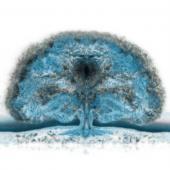
Carl-Richard replied to Sugarcoat's topic in Spirituality, Consciousness, Awakening, Mysticism, Meditation, God
Bliss and IQ are correlated -

James123 replied to Sugarcoat's topic in Spirituality, Consciousness, Awakening, Mysticism, Meditation, God
@Sugarcoat it is actually simply and truly being. That's all. However, idk about bliss but freedom and being not afraid is inevitable. -

Ishanga replied to Sugarcoat's topic in Spirituality, Consciousness, Awakening, Mysticism, Meditation, God
The Thing is the with the higher intensity Experiences like Bliss and Ecstasy, they don't allow one to function at times well in life situations, if Your a Householder and have a job and family, being Blissed out will make those things somewhat meaningless... I was watching some NDE ppl share their experiences, one Man after his heart stopped, he had 4 kids, a single father, and when he passed over to the "Other" side, he said the Bliss/Love he experienced made him forget his family, he said "At that moment I didn't care about them", so that is a bit of a danger to it, which is why Ashrams were build so ppl could go thru these experience in safe protected places... But saying that, it much better to be in Bliss than Depression or Anxiety, its just a matter of dealing with it using Clarity as a key aspect! This is why Guru's are so important!! -

Salvijus replied to Sugarcoat's topic in Spirituality, Consciousness, Awakening, Mysticism, Meditation, God
I suspect a quiet delight of the wholesomeness is the ultimate happiness. The exciting and stimulating bliss is just entertainment for the ego that leads to attachment and then attachment leads to suffering in the end. Also permanent loud bliss would become annoying after some time I believe. -

Sugarcoat replied to Sugarcoat's topic in Spirituality, Consciousness, Awakening, Mysticism, Meditation, God
I make distinction between neutrality and bliss/happiness. The absence of suffering is no feeling at all, vs a feeling of bliss/happiness -

Sugarcoat replied to Sugarcoat's topic in Spirituality, Consciousness, Awakening, Mysticism, Meditation, God
I’d be very content with simply neutrality. Maybe you could call that a type of bliss, but I still make a distinction between that neutrality and a more intense state of feeling something (happiness, ecstasy, bliss) -

Princess Arabia replied to Sugarcoat's topic in Spirituality, Consciousness, Awakening, Mysticism, Meditation, God
What is it that will know it's enlightened. What is it that will know it's in bliss, Stop being deluded like the rest of minds. It's the mind that wants to become enlightened and be in a state of bliss. What's aware of all this is already enlightened and blissful if you want to use those terms for it. Nothing wrong with that. It is still being known. Knowledge is separation. One cannot know themselves one can only be themselves. (which reminds me, I should change my signature). On the other side of that knowing is something that knows. In that knowing there are no words or images. Words and images are known. They come and go. You are aware of those coming and going. You cannot escape yourself. The person that you think you are, is known. If you become in a state of bliss, that will be known. Known by what/who, YOU. Awareness. Sounds goo goo ga ga, right. Let me know when you hear someone on this forum says they're enlightened. Let me know when someone on the forum says they're in a state of permanent bliss and I'll show you someone who thinks they're enlightened and blissful, someone who has witnessed a person become enlightened and blissful. Who or what is prior to witnessing that. Let me know too. -
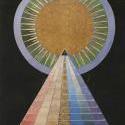
SamC replied to Sugarcoat's topic in Spirituality, Consciousness, Awakening, Mysticism, Meditation, God
If you want Neutrality, then that's your idea of bliss. Bliss is simply feeling the best you can feel and exaxtly how you want to feel. Who wouldn't want that? That's litterly why we do everything we do. -

Ishanga replied to Sugarcoat's topic in Spirituality, Consciousness, Awakening, Mysticism, Meditation, God
People want only what is lacking in their life, poor ppl want more money, weathly ppl want more power, stupid ppl want more knowing... Bliss is the grease that makes it all flow that much easier, Bliss is a by product of Enlightenment I would say. And Bliss is higher up on the scale of Intensity of Experiences, lets say compared to Peace, Peace is 0 on a scale of 10, anything below Peace is not really living the Human Potential in any way, Happiness is 4, Joy is 7, Bliss is 9 and Ecstasy is 10 on a scale of how Intense an Experience is (empowering Experiences)... Just be Peaceful first as a natural Experience, then for sure it will flow upwards! -

gettoefl replied to Vercingetorix's topic in Spirituality, Consciousness, Awakening, Mysticism, Meditation, God
It has. You are resisting and fighting and putting up barriers and borders The all loving all holy God could not contaminate itself with any such madness Yet in its delight towards its magnificent offspring, it gives you free will to do so. Death suffering separation are illusion. You made all this here yourself rather than living in bliss as you were designed Seems like a long dream here but it is the blink of an eye while you take a nap and engage in escapism from heaven's joy -

Ishanga replied to Vercingetorix's topic in Spirituality, Consciousness, Awakening, Mysticism, Meditation, God
Remember there is no Absolute Meaning in any action or creation, everything is Relative in a sense, Your Meaning, what means something to You, means nothing to someone else and so forth, just like there is no absolute right or wrong, good or bad, it all depends on relativity and perception and such... Absolute is the way it is because it holds all Potentials and Possibilities.. The things You mention, they happen in all life forms, but only we Humans have choice, we don't have to kill unnecessarily, we have to kill to eat and survive, but we don't have to kill for the sake of killing, same with destruction and all the other dis empowering actions we take all the time, we have choice we just haven't decided yet to do more Empowering actions than Dis Empowering ones.. This is all reliant on how Conscious we are as a Species overall, its obvious we are not overall very conscious, once we raise the level of Consciousness in most ppl, then things will Transform.. To Be Conscious means Your intouch with Truth and Reality, which means Your Experience of Life is All Inclusive, You feel a great sense of Oneness, Connection and Bliss, and You see Reality for what it is, not what You want it too be or what You heard it should be like... -

MAHAVATAR_-_BABAJI posted a topic in Spirituality, Consciousness, Awakening, Mysticism, Meditation, God
Try it before shunning it! 1. To start, this technique was developed by me. I was ........... It has made doing yoga even more enjoyable while also allowing me to control involuntary functions of the body. 2. If you have trouble getting an erection whenever it is difficult, then this technique will help you to do so. This technique also allows you to reach orgasm in basic everyday yoga poses(which should happen, but most people do them incorrectly). The advanced practitioner can send this sensation up to the skull and experience a new state of consciousness, which is described as a sense of extreme bliss. This procedure defies our everyday understanding of sexual energy and functioning. We will not be stroking, humping, or rubbing anything. The best poses to use this technique in are the Locust pose, Serpent Pose, low cobra pose, upward facing dog pose, Bow Pose, seal pose, sphinx pose, side-plank pose, and Shavasana/corpse on the back pose. You can also do this procedure sitting in a chair and using the wrist or forearm to add pressure to a region slightly above the genital organs(Men: penis' root| Women: The mons pubis). 3. Whenever we yawn and stretch our legs away from the body, a sensation occurs in the genital region as well as within the leg muscles themselves. This sensation is a shiver or a tingling feeling similar to having an orgasm. 4. When we add pressure(when you get good you won't have to add any pressure)to this region and extend our legs away from the body we place pressure on the perineum and that leads to an orgasm(for men with or without an erection) in less than 10 seconds(when you get good). 5. Preliminary exercise: lay on the floor, on your stomach, and extend the legs and feet away from your body as much as possible and beyond what feels comfortable. Turn your thighs and feet towards each other, keeping the legs close together(similar to the Locust pose). Now, push the pubic bone(where pubic hair grows) into the floor like you are doing a reverse kegel, and still keep everything extended/flexed and rotated inwards until a sensation arises in the genital region. You may add mula bandha uddiyana bandha and Chant Lam(Lawwng) at the perineum when you hold this locked position of the legs and feet(ankles). Sometimes, doing a yawn while you do the stretching of the leg procedure will aid in having the sensation arise in the genital region. 6. It may take a few attempts to do the cycle until a sensation arises. Using erotic audio or visuals will help it occur 10 times faster. The more times you do the cycle, the more and more present the sensation becomes. The better you get at it, the less intensity is required to generate the sensation. I typically do what is known as edging by first causing the sensation to arise after repeated attempts(usually 1-3) and then I simply press the pubic bone into the floor until the orgasmic sensation becomes very present, and then I relax and slightly come out of the pose I am in. I repeat this while looking at erotic imagery. If one does happen to reach orgasm it is similar to a prostate orgasm in the sense that it occurs for a longer duration with high intensity. 7. *Seated* - Do the same procedure of the legs and add uddiyana bandha and mula bandha(breath is paused and stomach is drawn inward towards the spine). Use the side of your wrist(bone) or an object to add pressure to the genital area described above. 8. *Standing* - Stand on your tippy toes and do the procedure of the legs. Press the pubic bone into a counter or a table to generate the pressure required for the sensation to arise. If you don't have a table or a chair, you can use the pad of your thumb to add pressure to this area. 9. *Kneeling/Without extending the legs* - This is done by first doing the leg extension cycle a few times until the sensation becomes more and more present in the genital(svadisthana) area. Then you just add pressure with either the side of the wrist, or the pad of your thumb, to that area where the sensation arises(in the genital region) and a feeling like "semen is rising"(for men), or the "shivering sensation is rising upwards", or "the tingling shiver sensation is becoming more and more present". 10. *To just get an erection(for men, especially when it is cold)*. Repeat the extension procedure multiple times with added pressure to the penis root area until the shaft enlarges. 11. To the onlooker, it just looks like you are stretching your legs or yawning or just doing a yoga pose. But, with practice, you will be able to make the area so sensitive that even the slightest touch/pressure will send you into states of orgasmic bliss. 12. ●kegel-pedal-rotate-uddiyana-mula-curl-Shiver/Tingle | This is a sequence I repeat mentally while I'm doing the procedure. It helps to get the sensation to occur immediately. It's kind of like doing navi kriya in the sense that you are doing an action while mentally saying something. 13. I hope this technique I've created(nowhere else on the internet will you find anything about this) works for you, and you can start to enjoy doing normal Hatha yoga poses. During my studies, when I was developing this technique, the closest thing I found to it was a term known as "coregasm/yogasm." 14. Thank you all for reading, and hopefully, this becomes your new and more spiritual way of pleasing yourself and reaching higher levels of consciousness. This is a higher conscious way of doing something most people perform unconsciously. 15. Stay tuned, and I will post a way to achieve lucid dreams and soul travel at will. I currently write all my songs while asleep. The process I have created will allow any beginner to have a lucid dream or soul travel. 16. #GodSpeed. . . . #5 in detail >>> You really have to extend the feet/ankles and the knee caps to full extension. I'd love to make a video and show how many seconds it takes for me to even reach orgasm. Just extending the legs does nothing. You must first extend the knee caps, ankles(feet) away from the body. Then, while holding that extension, you press the pelvis(pubic bone) into the floor. If you are a man, I recommend you do this preliminary exercise to get the sensation I'm speaking about: 0. 【Remeber to do uddiyana bandha(bringing in the lower abs or 3 inches Below the belly button towards the spine) and mula bandha(contracting the perineum and PAUSE THE BREATH).】 1. Get an erection 2. Lay on the stomach and have the erect genital organ facing upwards(fowards) in the center of the body. 3. Place your left or right hand under the erect genital organ, palm facing upwards on the underside of the penis. Now, wrap your hand around the shaft of the penis still with the palm facing upwards. 4. Pull the skin of the shaft all the way down to the scrotum, press the pubic bone into the hand holding the shaft of the penis, now add the extension of the legs(the knee caps and the ankles extend away from the body). 5. Hold this for a few seconds, relax and repeat. I recommend using a erotic visual to help you. Idk why, but it helps to create the sensation. Once you feel you are about to reach orgasm stop and do the same thing without the use of the hand. 6. I added this hand method as a way to "bring the floor" up to you a bit more so you can see what's really going on. When you get good you won't need any pressure on the genital organs and can even lie on your back, with hands at your sides, and still create the shiver/tingling or lightning-like sensation or a sensation like you are about to pee. __________________________________________ Definitely don't over complicate it: ●Just extending the ankles and feet away from the body and having the kneecaps lock in full extension while on your stomach won't cause any sensation to occur. I just tried this, and nothing happened. >1.)Do a reverse kegel first by pressing the pubic bone into the floor, placing pressure on the genital region. >2.)Extend BOTH feet away from the body(LIKE PRESSING A CAR PEDAL) so tension, like flexing a muscle, occurs in BOTH ankles. >3.)Try to keep the feet touching the floor, but the kneecaps raised off of the floor. >4.)Try to rotate the left knee to the right knee and the right knee toward the left knee, so pressure is further added upon the perineum. >5.)Draw the stomach inwards and pause the breath, contract the perineum(uddiyana and mula bandha) and CURL THE PELVIS FOWARDS(LIKE DOING A HUMP OR IN YOGIC TERMS THIS WOULD BE THE "COW" PORTION OF THE "CAT AND COW" HATHA POSES. RESEARCH THESE POSES). >6.)Hold this "locked" position for a few seconds trying to feel a sensation of water like substance rising in the genital region(like peeing, or also called the "shivering sensation" or "tingling sensation" >7.) Exhale and relax, then repeat a few times until orgasm occurs. ...Be mature in the comments section. -

Ishanga replied to Will1125's topic in Spirituality, Consciousness, Awakening, Mysticism, Meditation, God
Well all of us are full of Potential, by choosing to be Happy naturally, I am choosing a certain Potential that may lead to other Potentials. In my Experience, suffering emotions like anger, sadness, anxiousness/depression (have experienced them all) are not empowering for Me, they lead me to less Potential being exposed in my Experience, but others are able to choose what Potentials are experienced, if they want the suffering ones so be it! For Me I want Joyful Experiences, as I said to Princess Arabia on another thread, with Bliss/Joy as Your Natural Experience the Road to higher Potentials is smoother, with Suffering the road is bumpier, I prefer smoother roads:) Plus Suffering Emotions are unhealthy for the Body and Mind, causes more problems to arise that have to be dealt with, I know no one that wants to consciously feel sad, angry, depressed or anxious...
